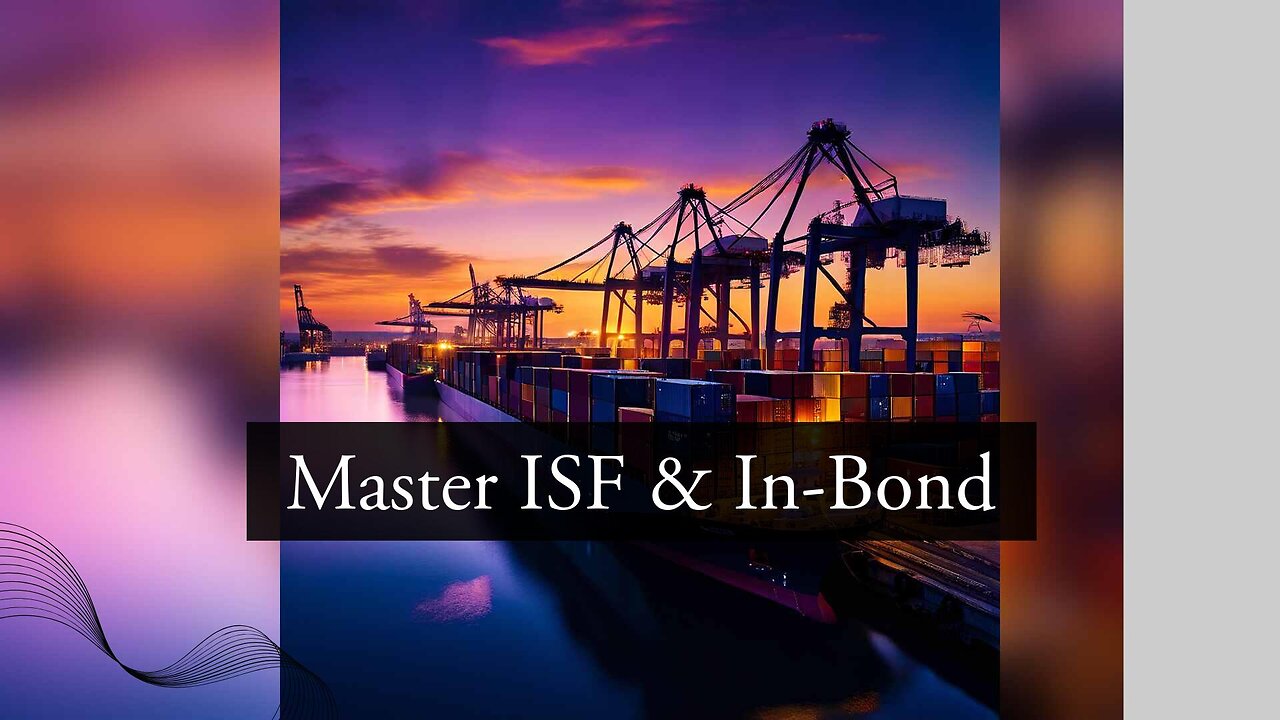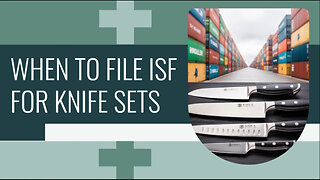Premium Only Content

Mastering Importer Security Filing for Seamless In-Bond Shipments
License To Import // 323-578-6432 // file@licensetoimport.com // www.licensetoimport.com
Importing goods involves various complex procedures, including the requirement of Importer Security Filing (ISF) or the 10+2 rule in the US. ISF necessitates importers or their agents to provide specific details about the cargo before it arrives at the port of entry, such as information about the shipper, consignee, and manufacturer. For customs brokers, complying with ISF is crucial to avoid penalties, delays, and cargo holds. ISF also has a significant impact on in-bond shipment transactions, which involve moving goods between two US ports without paying duties or taxes. Previously a paper-based system, in-bond shipments can now be streamlined through electronic submission of ISF, improving the entire procedure. This electronic transmission of ISF data also facilitates effective communication and collaboration between customs brokers, carriers, and other stakeholders involved in in-bond shipments. Additionally, ISF enhances compliance and security measures by providing detailed information in advance to enable risk assessments and target higher-risk shipments for inspection. However, challenges can arise, such as incorrect or incomplete information, data discrepancies, or delays in ISF filing. Customs brokers must proactively address these challenges by working closely with importers and utilizing advanced technology solutions. Gaining a comprehensive understanding of ISF requirements and effectively managing them is essential for customs brokers to ensure smooth and compliant international trade operations.
#usimportbond #isfcustomsbroker #uscustomsclearing #isfentry
Video Disclaimer Here: This video is solely for education and is not endorsed by any US government agency.
00:24 Understanding Importer Security Filing (ISF)
00:57 Importance of ISF in Customs Brokerage
01:23 Streamlining In-Bond Shipment Transactions
01:49 Facilitating Communication and Collaboration
02:14 Ensuring Compliance and Security
02:40 Potential Challenges and Solutions
-
 1:39
1:39
License To Import
30 days agoWhen To File ISF For Knife Sets
9 -
 LIVE
LIVE
The Bubba Army
2 days agoHogan's Death Suspicious? - Bubba the Love Sponge® Show | 8/04/25
5,243 watching -
 LIVE
LIVE
FyrBorne
10 hours ago🔴Warzone M&K Sniping: Does Battlefield Pose A Threat To Call Of Duty BO7?
135 watching -
 24:19
24:19
DeVory Darkins
11 hours ago $4.18 earnedTrump scores RECORD BREAKING NEWS Democrats dealt FATAL BLOW after tragic event
5.15K13 -
 41:45
41:45
Chris Harden
7 days ago $1.21 earnedKansas Backroads | What's Really Out Here? - Rice County
4.04K -
 46:38
46:38
SouthernbelleReacts
6 days ago $0.34 earned"Smart Sharks, Dumb Decisions | Deep Blue Sea (1999) Reaction & Commentary"
2.15K2 -
 16:30
16:30
ColdBeer
4 days ago $0.61 earned20 Best Action RPG Games like Diablo | 2025 Edition
4.32K5 -
 16:33
16:33
AndresRestart
15 hours ago $0.28 earnedHUGE Nintendo Game Release Date Info Just Got Out Apparently!?
2.43K1 -
 16:49
16:49
Eat Sleep Cruise
7 days ago $0.26 earnedOur HONEST Celebration Key Review - Carnival's New Private Island in The Bahamas
2.87K -
 8:41
8:41
nospeedlimitgermany
5 days ago $0.19 earnedBMW 316i E36 Compact 102 PS Top Speed Drive German Autobahn No Speed Limit POV
2.81K